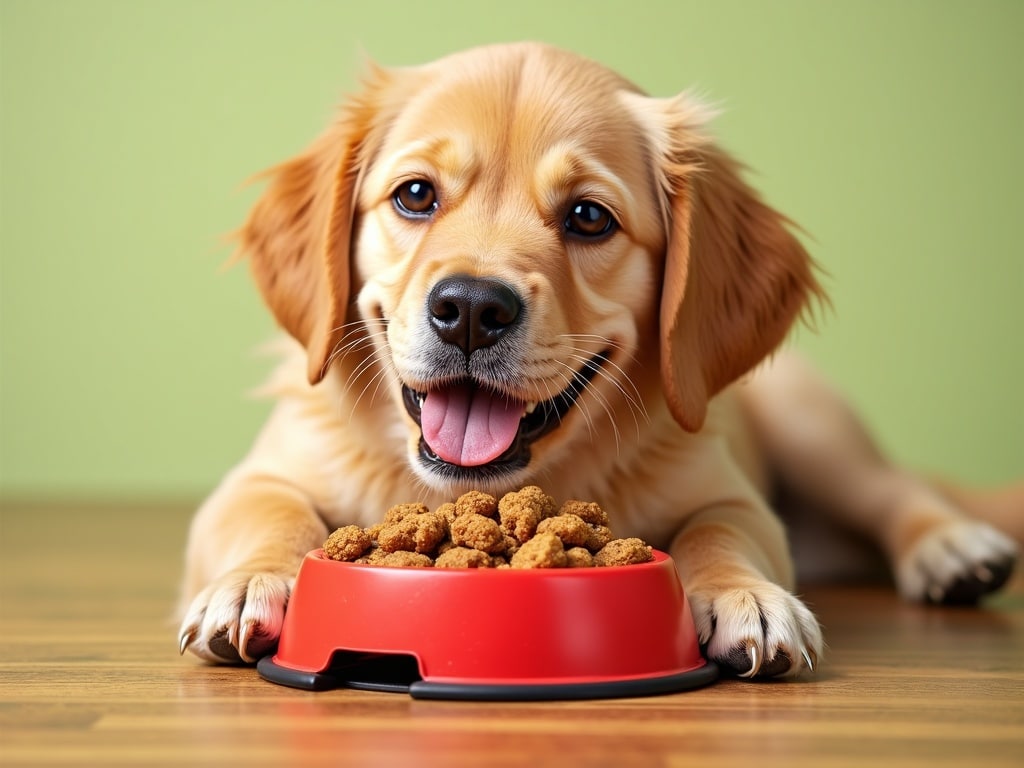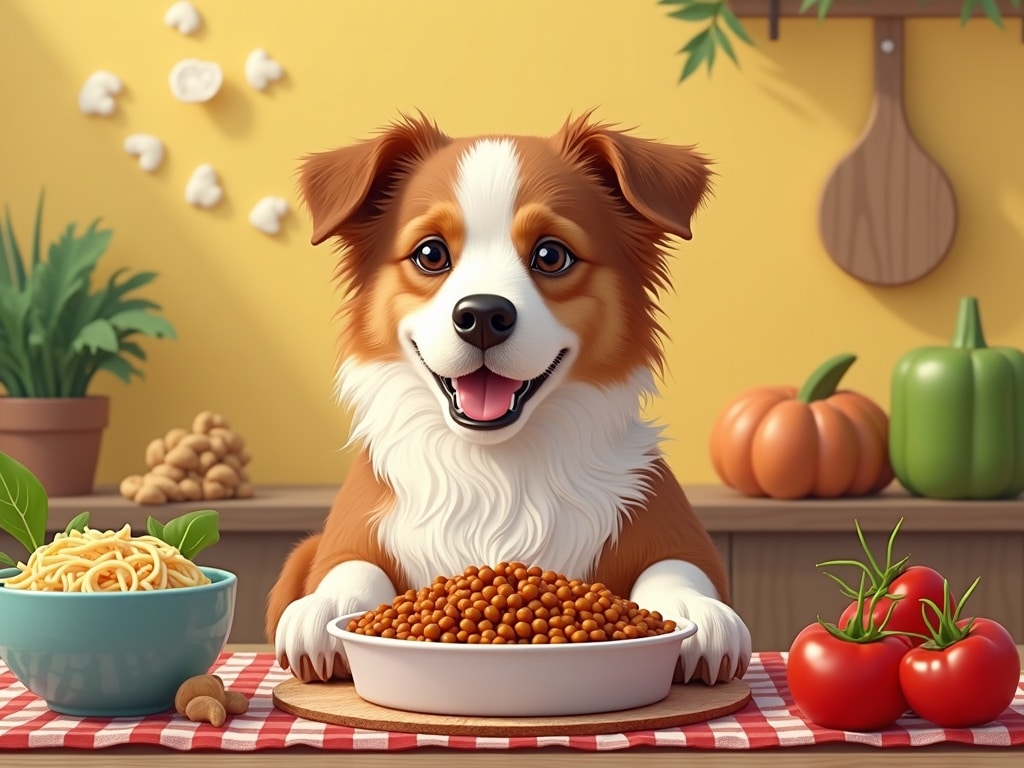Homemade Dog Food Recipes for Beginners: A Guide to Nutritious Meals
Imagine the feeling of knowing exactly what goes into your dog's bowl, ditching the mystery ingredients and fillers of commercial dog food. Making your own dog food can feel daunting at first, but it’s a rewarding journey toward a healthier, happier pup. This guide simplifies the process with easy homemade dog food recipes for beginners, ensuring your furry friend gets the best nutrition without the fuss.
Why Choose Homemade Dog Food?
Before diving into the recipes, let's explore why more and more dog owners are opting for homemade dog food. The benefits are numerous and compelling.
Control Over Ingredients
One of the biggest advantages is complete control over what your dog eats. You select each ingredient, ensuring high quality and avoiding potential allergens or sensitivities. Say goodbye to artificial preservatives, colors, and mystery meat by-products!
Improved Health
Many owners report significant improvements in their dogs' health after switching to a homemade diet. Benefits can include:
- Shinier coat
- Increased energy levels
- Better digestion
- Reduced allergies
- Weight management
Bonding Experience
Preparing meals for your dog can be a bonding experience. It's an act of love and care that strengthens your relationship. Plus, your dog will definitely appreciate the delicious meals!
Understanding Your Dog's Nutritional Needs
Before you start cooking, it's crucial to understand your dog's nutritional requirements. Dogs need a balanced diet consisting of:
- Protein: Essential for muscle building and repair.
- Carbohydrates: Provide energy and fiber.
- Fats: Important for healthy skin and coat.
- Vitamins & Minerals: Support overall health and immune function.
A good rule of thumb is to aim for a diet that is approximately 40% protein, 50% carbohydrates, and 10% fats. However, this can vary based on your dog's age, breed, activity level, and health conditions. Consulting with a veterinarian or a canine nutritionist is always recommended, especially if your dog has specific dietary needs. They can help you create a personalized meal plan.
Essential Ingredients for Homemade Dog Food
Here's a list of ingredients commonly used in homemade dog food recipes:
Protein Sources
Lean Meats: Chicken, turkey, beef, lamb, and fish (ensure all bones are removed).
Eggs: An excellent source of protein and essential amino acids.
Legumes: Lentils and beans can be a source of protein, but should be fed in moderation.
Carbohydrate Sources
Grains: Brown rice, quinoa, oats, and barley (ensure they’re well-cooked).
Vegetables: Sweet potatoes, carrots, peas, green beans, and pumpkin.
Fat Sources
Fish Oil: Rich in omega-3 fatty acids for a healthy coat and skin.
Flaxseed Oil: Another great source of omega-3s.
Vitamins and Minerals
A balanced dog-specific vitamin and mineral supplement is often necessary to ensure your dog is getting everything they need. Consult with your vet about the best option for your dog.
Essential Equipment for Making Homemade Dog Food
You likely already have most of what you need, but here’s a quick list:
Large Pot: For cooking grains and vegetables.
Cutting Board and Knife: For prepping ingredients.
Measuring Cups and Spoons: For accurate ingredient ratios.
Food Scale: To weigh portions.
Storage Containers: For storing cooked food in the refrigerator or freezer.
Meat Thermometer: Ensure meat is cooked to a safe temperature.
Beginner-Friendly Homemade Dog Food Recipes
Here are a few simple and nutritious recipes to get you started. Remember to adjust portion sizes based on your dog's individual needs.
Recipe 1: Chicken and Rice Delight
Ingredients:
2 lbs boneless, skinless chicken breasts
4 cups cooked brown rice
2 cups mixed vegetables (carrots, peas, green beans)
4 cups water or low-sodium chicken broth
1 tbsp fish oil
Dog vitamin and mineral supplement as directed
Instructions:
1. Cook the chicken: Poach chicken breasts in water until fully cooked. Shred or dice into small pieces.
2. Prepare the rice: If you haven't already, cook brown rice according to package instructions.
3. Cook Vegetables: Steam, roast, or boil the vegetables until tender.
4. Combine: In a large bowl, combine the cooked chicken, rice, and vegetables.
5. Add Supplements: Mix in the fish oil and vitamin supplement.
6. Portion and Store: Divide into appropriate portion sizes and store in the refrigerator for up to 3 days or freeze for longer storage.
Recipe 2: Turkey and Sweet Potato Bowl
Ingredients:
2 lbs ground turkey (93% lean)
4 cups cooked sweet potato (diced)
1 cup spinach (chopped)
4 cups water
1 tbsp coconut oil
Dog vitamin and mineral supplement as directed
Instructions:
1. Cook the turkey: Brown the ground turkey in a large skillet over medium heat. Drain any excess fat.
2. Prepare the sweet potato: Roast or boil sweet potatoes until soft. Dice into small pieces.
3. Sauté Spinach: Add chopped spinach to the skillet with the turkey and cook until wilted.
4. Combine: In a large bowl, combine the cooked turkey mixture and sweet potato.
5. Add Supplements: Mix in the coconut oil and vitamin supplement.
6. Portion and Store: Divide into portion sizes and store in the refrigerator for up to 3 days or freeze for longer storage.
Recipe 3: Beef and Barley Stew
Ingredients:
2 lbs lean ground beef
4 cups cooked barley
2 cups diced carrots
1 cup peas
1 tbsp olive oil
4 cups low-sodium beef broth
Dog vitamin and mineral supplement as directed
Instructions:
1. Cook the beef: Brown the ground beef in a large pot. Drain any excess fat.
2. Prepare Carrots: Add diced carrots and peas to the pot and sauté for 5 minutes.
3. Add Liquid: Pour in the beef broth and bring to a simmer.
4. Add Barley: Stir in the cooked barley.
5. Simmer: Reduce heat and simmer for 15-20 minutes, or until the vegetables are tender.
6. Add Supplements: Stir in the olive oil and vitamin supplement.
7. Portion and Store: Divide into portion sizes and store in the refrigerator for up to 3 days or freeze for longer storage.

Transitioning Your Dog to Homemade Food
Transitioning to homemade dog food should be done gradually. This helps your dog's digestive system adjust and minimizes the risk of upset stomach.
Gradual Transition Plan:
Day 1-3: Mix 25% homemade food with 75% of their old food.
Day 4-6: Mix 50% homemade food with 50% of their old food.
Day 7-9: Mix 75% homemade food with 25% of their old food.
Day 10: 100% homemade food.
Monitor your dog's stool during the transition. If you notice any diarrhea or vomiting, slow down the transition or consult with your veterinarian.
Important Safety Tips
Your dog's health is the top priority. Always follow these simple rules to ensure food safety:
Cook Meat Thoroughly: Always cook meat to a safe internal temperature to kill bacteria.
Avoid Toxic Foods: Never feed your dog chocolate, grapes, raisins, onions, garlic, avocados, or anything containing xylitol (an artificial sweetener). These can be toxic to dogs.
Remove Bones: Always remove bones from cooked meat to prevent choking or internal damage.
Wash Produce: Wash all fruits and vegetables thoroughly before preparation.
Handle Food Safely: Practice good hygiene when preparing dog food, just as you would when cooking for yourself. Wash your hands and clean your cooking surfaces regularly.
Store Food Properly: Store homemade dog food in the refrigerator for up to 3 days or in the freezer for longer storage (up to 2 months for optimum quality).
Addressing Common Concerns
Many beginners have questions and concerns about making homemade dog food. Here are a few common ones:
Is it more expensive to make my own dog food?
It can be, depending on the ingredients you choose. However, you're paying for quality ingredients, not fillers, and that can be worth the investment.
How much should I feed my dog?
Portion sizes vary depending on your dog's breed, weight, age, activity level, and metabolism. Start with the recommendations provided by your vet or a canine nutritionist and adjust as needed.
Can I customize the recipes?
Absolutely! These recipes are just a starting point. Feel free to experiment with different vegetables, grains, and protein sources, but always ensure the final product is balanced and meets your dog's dietary needs.
The Joy of a Healthy, Happy Dog
Embarking on the journey of making homemade dog food can be incredibly rewarding. Knowing that you're providing your beloved companion with nutritious, wholesome meals made with love is a feeling like no other. With these beginner-friendly recipes and helpful tips, you're well on your way to a healthier, happier dog – one delicious meal at a time. So, put on your apron, grab your ingredients, and get ready to unleash your inner chef for the sake of your furry friend's well-being!

